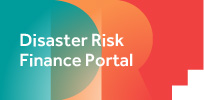Glossary
Glossary
Start your search
Filter your search by checking and unchecking the boxes below.
Definition type
Providers
Your search results
Risk-linked security instrument designed to transfer catastrophe risk from sponsors to capital markets investors through special purpose vehicle. Proceeds from the sale of the bonds are normally invested in liquid and collateral. Returns from the collateral together with premium paid by the sponsors enable bond to pay higher than market risk-adjusted returns. However, if no disaster trigger events occur, the investors get enhanced coupon and principal back to maturity. In case of disaster, the principal is transferred to the sponsor with no repayment obligation.
It allows the borrowers to rapidly meet their financing requirements following a shortfall in resources due to exogenous shocks such as climate shocks. It also gives a borrower the option to take down a loan on demand, at a pre-committed interest rate, or rate spread relative to a base rate.
Contingency reserves for disasters, or multi-year reserve funds essentially aimed at responding to events that are too frequent and small to insure.
Pre-arranged finance instruments used after a disaster.
Finance instruments not pre-arranged but can be availed through budget re-allocation or donor funding after a disaster.
Indirect cover whereby policies are held by – and payouts made to – government or other agencies (such as humanitarian organisations) working at national level, in order to provide emergency funding without cutting into their regular budgets.
Also known as index insurance, enables pre-defined payments based on expected losses, which are correlated against a measurable parameter (such as rainfall, temperature or earthquake intensity) or index of parameters. Unlike traditional indemnity insurance, parametric insurance allows payments to be triggered automatically rather than on physical verification of actual losses. Also known as index insurance, applications are agricultural insurance and forecast-based insurance.
Insurance companies at the national level may not have enough risk capital to properly insure against major climate events, such as regional hurricanes or droughts, which can trigger large payouts. In this case, the insurance company insures a portion of the risk with a third party reinsurer that has a sufficient risk capital to bear the loss.
For example, a windstorm insurance company could seek a reinsurance agreement that would cover all losses from a hurricane in excess of $1 billion
Risk pooling is the practice of sharing all risks among a group of nations. Risk pooling in insurance means that there are many contributors to help spread the financial risks from expensive claims more evenly.
Securing access to financial resources before a disaster strikes through sovereign catastrophe risk pools allows countries to respond quickly to disasters and reduce their impact on people and their livelihoods.

